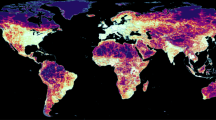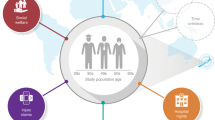Abstract
Time spent waiting for services represents unproductive time lost while fulfilling needs. We use time diary data from the nationally representative American Time Use Survey to estimate the difference between high- and low-income people in time spent waiting for basic services. Relative to high-income people, low-income people are one percentage point more likely to wait on an average day, are three percentage points more likely to wait when using services, spend an additional minute waiting for services on a typical day and spend 12 more minutes waiting when waiting occurs. The unconditional gap in waiting time suggests low-income people spend at least six more hours per year waiting for services than high-income people. The income gap in waiting time cannot be explained by differences in family obligations, demographics, education, work time or travel time. Further, high-income Black people experience the same higher average wait times as low-income people regardless of race.
This is a preview of subscription content, access via your institution
Access options
Access Nature and 54 other Nature Portfolio journals
Get Nature+, our best-value online-access subscription
$29.99 / 30 days
cancel any time
Subscribe to this journal
Receive 12 digital issues and online access to articles
$119.00 per year
only $9.92 per issue
Buy this article
- Purchase on Springer Link
- Instant access to full article PDF
Prices may be subject to local taxes which are calculated during checkout





Similar content being viewed by others
Data availability
The ATUS data used in our analysis is publicly available and the multi-year microdata files used in our analysis can be found at https://www.bls.gov/tus/datafiles-0319.htm. The poverty thresholds used in the imputation-based robustness check in Supplemental Information can be found at https://www.census.gov/data/tables/time-series/demo/income-poverty/historical-poverty-thresholds.html. The Annual Social and Economic Supplement to the Current Population Survey (also used in the imputation-based robustness check in Supplemental Information can be found at IPUMS (https://cps.ipums.org/cps/).
Code availability
Data files and the Stata17.do file for replicating the analysis is available on GitHub at https://github.com/stevebholt/waiting-time.
References
Cohen, E. F. The Political Value of Time: Citizenship, Duration, and Democratic Justice (Cambridge Univ. Press, 2018).
Gee, G. C., Hing, A., Mohammed, S., Tabor, D. C. & Williams, D. R. Racism and the life course: Taking time seriously. Am. J. Public Health 109, S43–S47 (2019).
Bittman, M. Social participation and family welfare: the money and time costs of leisure in australia. Soc. Policy Adm. 36, 408–425 (2002).
Kalenkoski, C. M., Hamrick, K. S. & Andrews, M. Time poverty thresholds and rates for the US population. Soc. Indic. Res. 104, 129–155 (2011).
Vickery, C. The time-poor: a new look at poverty. J. Hum. Resour. 12, 27–48 (1977).
Williams, J. R., Masuda, Y. J. & Tallis, H. A measure whose time has come: formalizing time poverty. Soc. Indic. Res. 128, 265–283 (2016).
Zilanawala, A. Women’s time poverty and family structure: differences by parenthood and employment. J. Fam. Issues 37, 369–392 (2016).
Strazdins, L. et al. Time scarcity: another health inequality? Environ. Plan. A 43, 545–559 (2011).
Jabs, J. & Devine, C. M. Time scarcity and food choices: an overview. Appetite 47, 196–204 (2006).
Venn, D. & Strazdins, L. Your money or your time? How both types of scarcity matter to physical activity and healthy eating. Soc. Sci. Med. 172, 98–106 (2017).
Kossek, E. E. & Lautsch, B. A. Work–life flexibility for whom? Occupational status and work–life inequality in upper, middle, and lower level jobs. Acad. Manag. Ann. 12, 5–36 (2018).
Loprest, P., Acs, G., Ratcliffe, C. & Vinopal, K. Who are low-wage workers? U.S. Department of Health and Human Services, Office of the Assistant Secretary for Planning and Evaluation https://aspe.hhs.gov/basic-report/who-are-low-wage-workers (2009).
Cohen, P. N. Replacing housework in the service economy: gender, class, and race-ethnicity in service spending. Gend. Soc. 12, 219–231 (1998).
Herd, P. & Moynihan, D. Administrative burdens in health policy. J. Health Hum. Serv. Adm. 43, 3–16 (2020).
Herd, P. & Moynihan, D. P. Administrative Burden: Policymaking by Other Means (Russell Sage Foundation, 2019).
Ray, V., Herd, P. & Moynihan, D. Racialized burdens: applying racialized organization theory to the administrative state. J. Public Adm. Res. Theory 33, 139–152 (2020).
Chen, M. K., Haggag, K., Pope, D. G. & Rohla, R. Racial disparities in voting wait times: evidence from smartphone data. Rev. Econ. Stat. 104, 1341–1350 (2019).
Pettigrew, S. The racial gap in wait times: why minority precincts are underserved by local election officials. Political Sci. Q. 132, 527–547 (2017).
Kugelmass, H. ‘Sorry, I’m not accepting new patients’: an audit study of access to mental health care. J. Health Soc. Behav. 57, 168–183 (2016).
Massey, D. S. & Lundy, G. Use of black English and racial discrimination in urban housing markets: new methods and findings. Urban Aff. Rev. 36, 452–469 (2001).
Liederbach, E. et al. Wait times for breast surgical operations, 2003–2011: a report from the national cancer data base. Ann. Surgical Oncol. 22, 899–907 (2015).
Hsiang, W. R. et al. Medicaid patients have greater difficulty scheduling health care appointments compared with private insurance patients: a meta-analysis. INQUIRY: J. Health Care Organ., Provis., Financing 56, 0046958019838118 (2019).
Oostrom, T., Einav, L. & Finkelstein, A. Outpatient office wait times and quality of care for Medicaid patients. Health Aff. 36, 826–832 (2017).
Chetty, R., Hendren, N. & Katz, L. F. The effects of exposure to better neighborhoods on children: new evidence from the moving to opportunity experiment. Am. Economic Rev. 106, 855–902 (2016).
Chetty, R. & Hendren, N. The impacts of neighborhoods on intergenerational mobility I: childhood exposure effects. Q. J. Econ. 133, 1107–1162 (2018).
Dutko, P., Ver Ploeg, M. & Farrigan, T. Characteristics and influential factors of food deserts (United States Department of Agriculture, 2012).
Cooksey-Stowers, K., Schwartz, M. B. & Brownell, K. D. Food swamps predict obesity rates better than food deserts in the United States. Int. J. Environ. Res. Public Health 14, 1366 (2017).
Schuetz, J., Kolko, J. & Meltzer, R. Are poor neighborhoods ‘retail deserts’? Regional Sci. Urban Econ. 42, 269–285 (2012).
Dunham, I. M. Forgotten landscapes of financial exclusion: a geographic analysis of banking deserts and the two-tiered financial service system. In Proc. of the International Association for Business and Society Vol. 29 (ed Maas, K.) 96–109 (IABS, 2018).
Hegerty, S. W. Commercial bank locations and ‘banking deserts’: a statistical analysis of Milwaukee and Buffalo. Ann. Regional Sci. 56, 253–271 (2016).
Pendall, R. et al. Driving to opportunity: understanding the links among transportation access, residential outcomes, and economic opportunity for housing voucher recipients (Urban Institute, 2014).
Baker, C., Floros, T. & Kristensen, K. Vehicle financing inequality: what can be done? Federal Reserve Bank of St. Louis https://www.stlouisfed.org/publications/bridges/volume-1-2020/vehicle-financing-inequality (2020).
Quinton, S. How car ownership helps the working poor get ahead. The Atlantic https://www.theatlantic.com/politics/archive/2014/07/how-car-ownership-helps-the-working-poor-get-ahead/431160/ (2014).
Aguir, M. & Hurst, E. The Increase in Leisure Inequality, 1965–2005. National Research Initiative (American Enterprise Institute for Public Policy Research, 2009).
Sevilla, A., Gimenez-Nadal, J. I. & Gershuny, J. Leisure inequality in the United States: 1965–2003. Demography 49, 939–964 (2012).
Schwartz, B. Waiting, exchange, and power: the distribution of time in social systems. Am. J. Sociol. 79, 841–870 (1974).
Roy, D. F. Work satisfaction and social reward in quota achievement: an analysis of piecework incentive. Am. Sociol. Rev. 18, 507–514 (1953).
Pfeffer, J. Managing with Power: Politics and Influence in Organizations (Harvard Business Press, 1992).
Scott, J. C. Domination and the Arts of Resistance (Yale Univ. Press, 2008).
Auyero, J. Patients of the state: an ethnographic account of poor people’s waiting.Lat. Am. Res. Rev. 46, 5–29 (2011).
Roy, K. M., Tubbs, C. Y. & Burton, L. M. Don’t have no time: daily rhythms and the organization of time for low-income families. Fam. Relat. 53, 168–178 (2004).
Bonilla-Silva, E. & Baiocchi, G. Anything but racism: how sociologists limit the significance of racism. Race Soc. 4, 117–131 (2001).
Kaufman, J. S. & Cooper, R. S. Commentary: considerations for use of racial/ethnic classification in etiologic research. Am. J. Epidemiol. 154, 291–298 (2001).
Nuru-Jeter, A. M. et al. Relative roles of race versus socioeconomic position in studies of health inequalities: a matter of interpretation. Annu. Rev. Public Health 39, 169–188 (2018).
Singh, M. & Venkataramani, A. Capacity strain and racial disparities in hospital mortality. Preprint at https://www.nber.org/papers/w30380 (NBER, 2022).
Wolfe, J., Jones, J. & Cooper, D. ‘Fair workweek’ laws help more than 1.8 million workers. Economic Policy Institute https://www.epi.org/publication/fair-workweek-laws-help-more-than-1-8-million-workers/ (2018).
Kesavan, S., Lambert, S., Williams, J. & Pendem, P. Doing well by doing good: improving store performance with employee-friendly scheduling practices at the Gap, Inc. Manage. Sci. 68, 7818–7836 (2022).
Juster, F. T. & Stafford, F. P. The allocation of time: empirical findings, behavioral models, and problems of measurement. J. Econ. Lit. 29, 471–522 (1991).
Kimbrough, G. Measuring commuting in the American Time Use Survey. J. Econ. Soc. Meas. 44, 1–17 (2019).
Allard, M. D. What is the impact of recoding travel activities in the American Time Use Survey? Mon. Labor Rev. 141, 1–13 (2018).
Sturman, M. C. Multiple approaches to analyzing count data in studies of individual differences: the propensity for type I errors, illustrated with the case of absenteeism prediction. Educ. Psychol. Meas. 59, 414–430 (1999).
Stewart, J. Tobit or not Tobit? J. Econ. Soc. Meas. 38, 263–290 (2013).
Acknowledgements
The authors received no specific funding for this work.
Author information
Authors and Affiliations
Contributions
S.B.H. contributed to the conceptualization, data analysis, writing and methods of the work. K.V. contributed to the conceptualization, writing, background research, and editing and review of the work.
Corresponding author
Ethics declarations
Competing interests
The authors declare no competing interests.
Peer review
Peer review information
Nature Human Behaviour thanks Chiara Monfardini, Lyndall Strazdins and the other, anonymous, reviewer(s) for their contribution to the peer review of this work.
Additional information
Publisher’s note Springer Nature remains neutral with regard to jurisdictional claims in published maps and institutional affiliations.
Supplementary information
Supplementary Information
Supplementary Figs. 1–12, Discussion and Tables 1–15.
Rights and permissions
Springer Nature or its licensor (e.g. a society or other partner) holds exclusive rights to this article under a publishing agreement with the author(s) or other rightsholder(s); author self-archiving of the accepted manuscript version of this article is solely governed by the terms of such publishing agreement and applicable law.
About this article
Cite this article
Holt, S.B., Vinopal, K. Examining inequality in the time cost of waiting. Nat Hum Behav 7, 545–555 (2023). https://doi.org/10.1038/s41562-023-01524-w
Received:
Accepted:
Published:
Issue Date:
DOI: https://doi.org/10.1038/s41562-023-01524-w
This article is cited by
-
Who wastes more time waiting? Income plays a part
Nature (2023)



